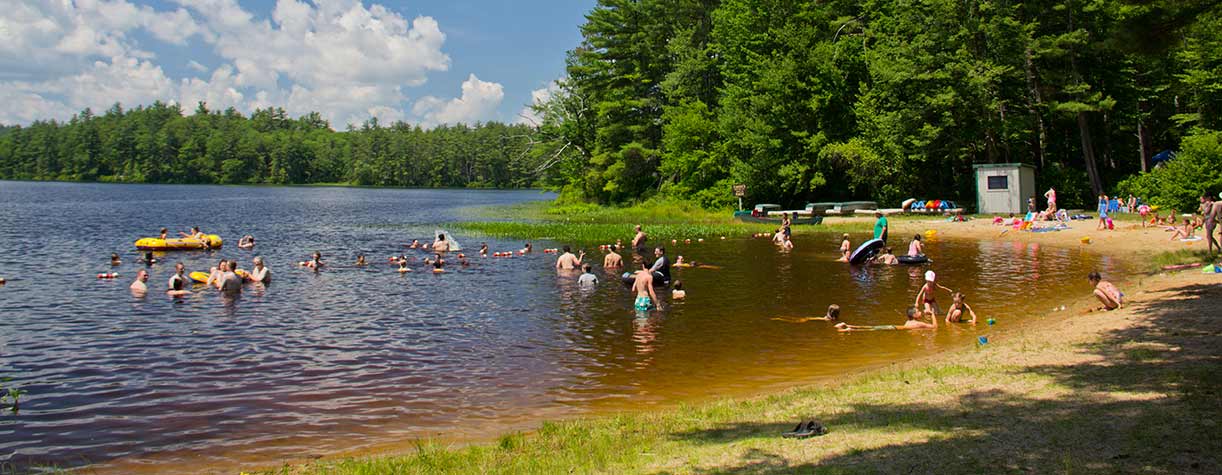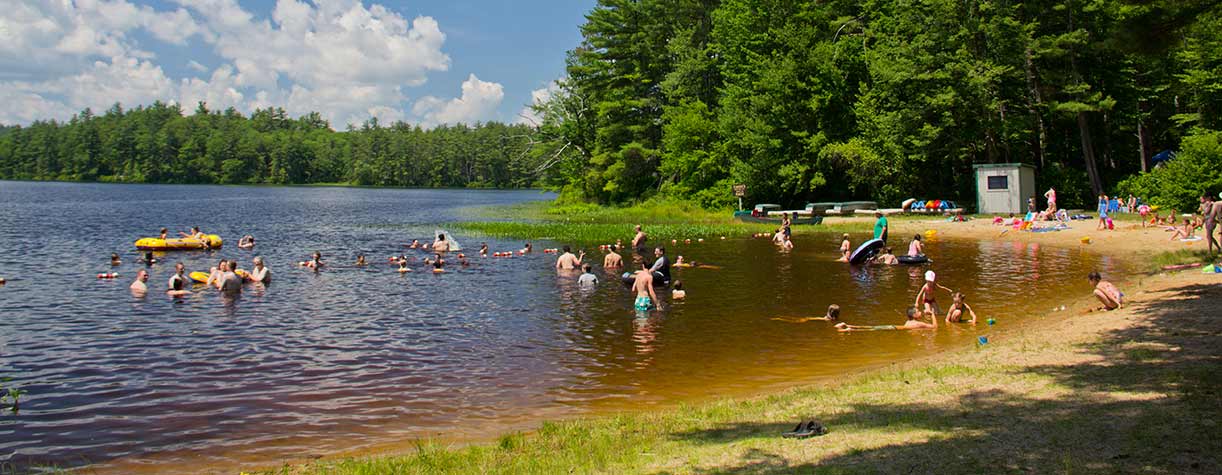In the quiet wilderness of Bear Brook State Park, a chilling mystery was about to unfold. On a crisp November day in 1985, a hunter stumbled upon a metal 55-gallon drum that would become the epicenter of one of New Hampshire’s most perplexing cold cases. Inside the barrel lay the bodies of an adult woman and a young girl, wrapped carefully in plastic, their identities a haunting enigma that would perplex investigators for decades.
Bear Brook State Park, where the tragic discoveries were made. Credit: Wikimedia Commons
Fifteen years later, in May 2000, another shocking discovery emerged near the original site. A second barrel contained the remains of two more young girls, creating a complex web of questions that would challenge even the most seasoned forensic experts. The proximity of these discoveries suggested a sinister connection, hinting at a killer who had meticulously hidden his gruesome crime for years.

Bear Brook State Park as it stands today. Credit: NH State Parks
The Bear Brook murders became a testament to the power of modern forensic science. Traditional investigative methods had failed to identify the victims, leaving their stories untold. However, the emergence of genetic genealogy would change everything. Forensic experts began using advanced DNA analysis techniques that could reconstruct family trees and trace genetic connections with unprecedented precision.
At the heart of this case were four individuals: a mother and three children, whose lives were brutally cut short. Marlyse Honeychurch and her daughters Marie Elizabeth Vaughn and Sarah Lynn McWaters had disappeared from California around Thanksgiving in 1978. Their connection to the killer would reveal a story of manipulation, deception, and unimaginable tragedy.
The investigation revealed a serial killer of extraordinary complexity. Terry Peder Rasmussen, known by multiple aliases including “Bob Evans”, emerged as a master of disguise. He had lived under different identities, moving across states and leaving a trail of mysterious disappearances and murders in his wake.
Genetic genealogy became the key to unraveling this complex case. By mapping family trees and using sophisticated DNA analysis, investigators could trace connections that were previously impossible to establish. The Bear Brook case became a landmark moment in forensic science, demonstrating how modern technology could solve decades-old mysteries.
In June 2019, after years of painstaking research, three of the four victims were finally identified. Marlyse Honeychurch and her daughters Marie and Sarah were laid to rest, bringing a measure of peace to their long-suffering families. The fourth victim – a young girl – remains unidentified, a poignant reminder of the ongoing quest for justice.
Categories: Cold Cases, forensic science, Historical Cases, True Crime, Unsolved Mysteries
Tags: Bear Brook Murders, cold case, DNA Analysis, forensic science, Genetic Genealogy, Missing Persons, New Hampshire, Serial Killer, Terry Rasmussen, true crime
Religion: Not applicable
Country of Origin: United States
Topic: True Crime
Ethnicity: Various


